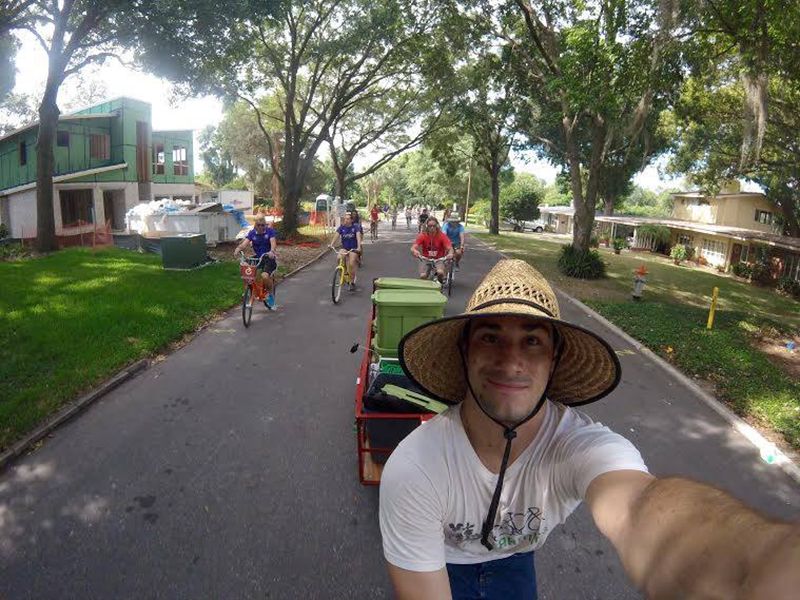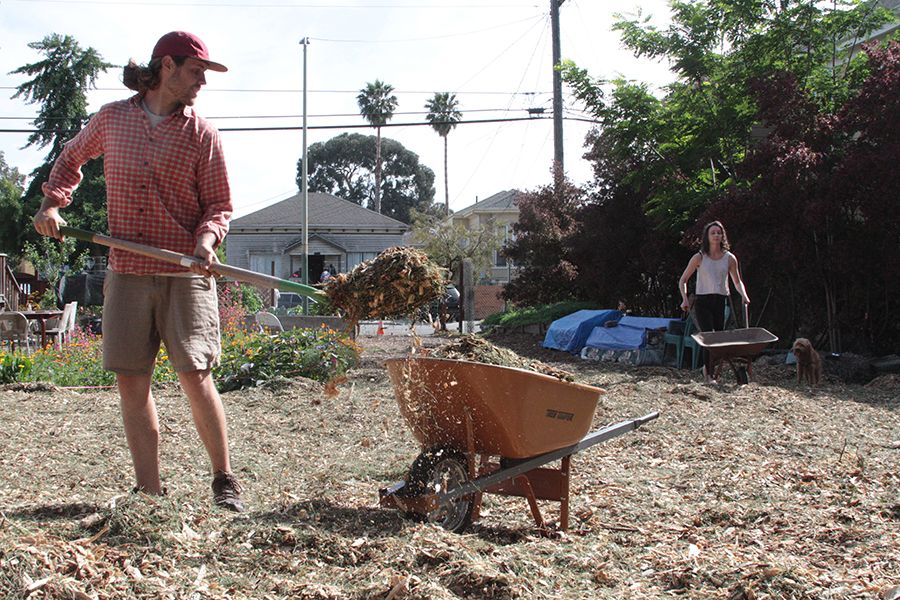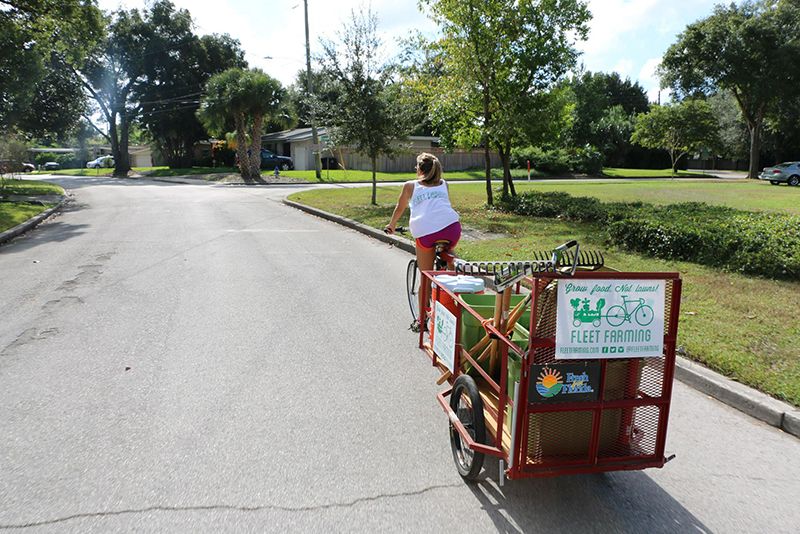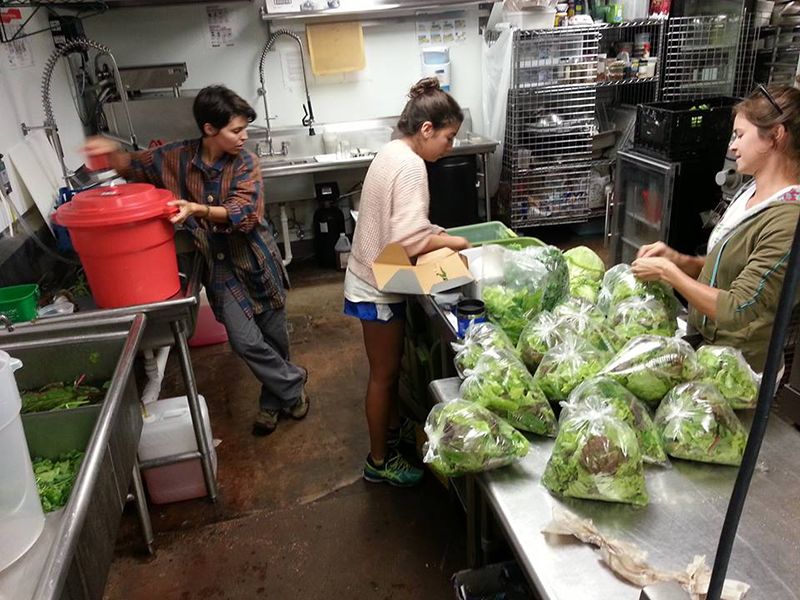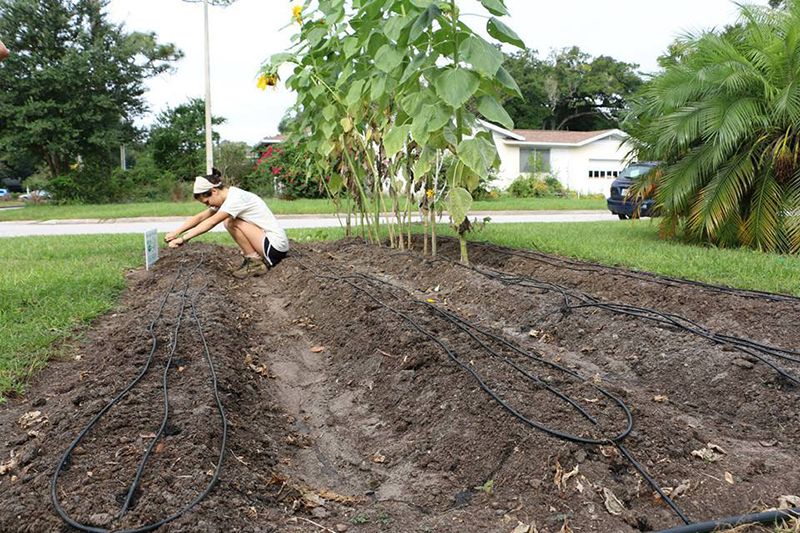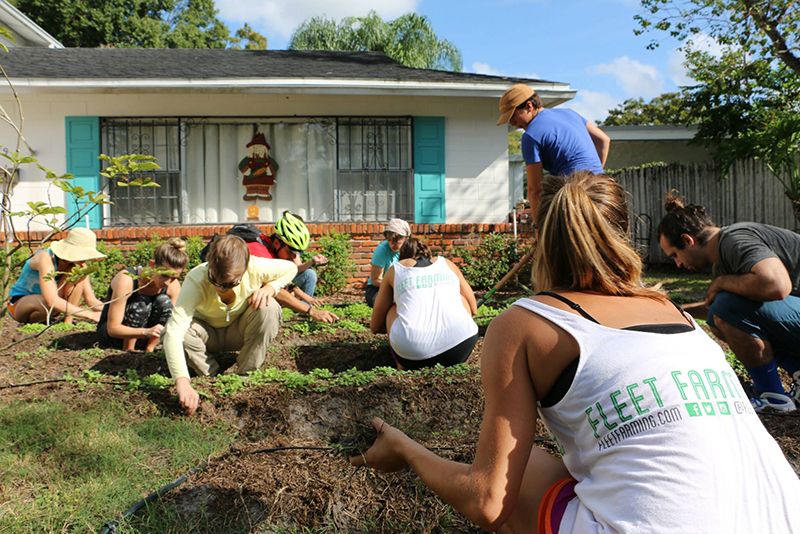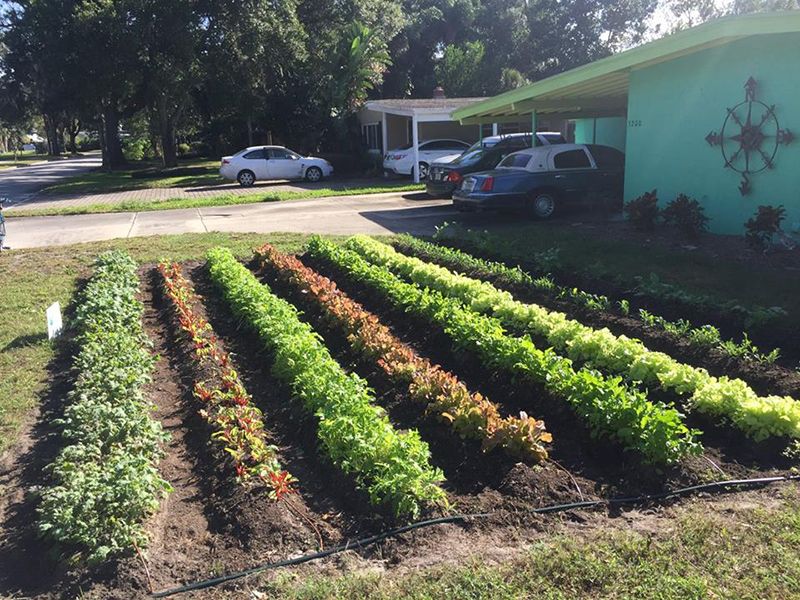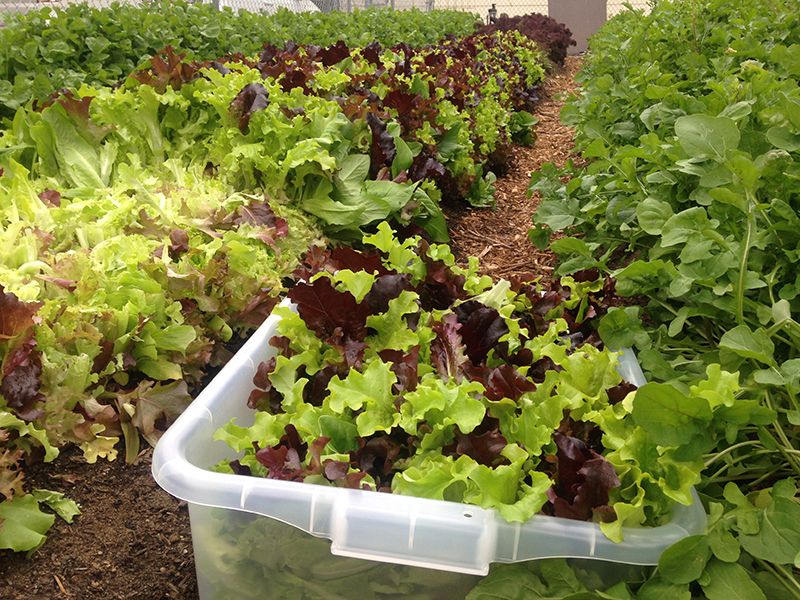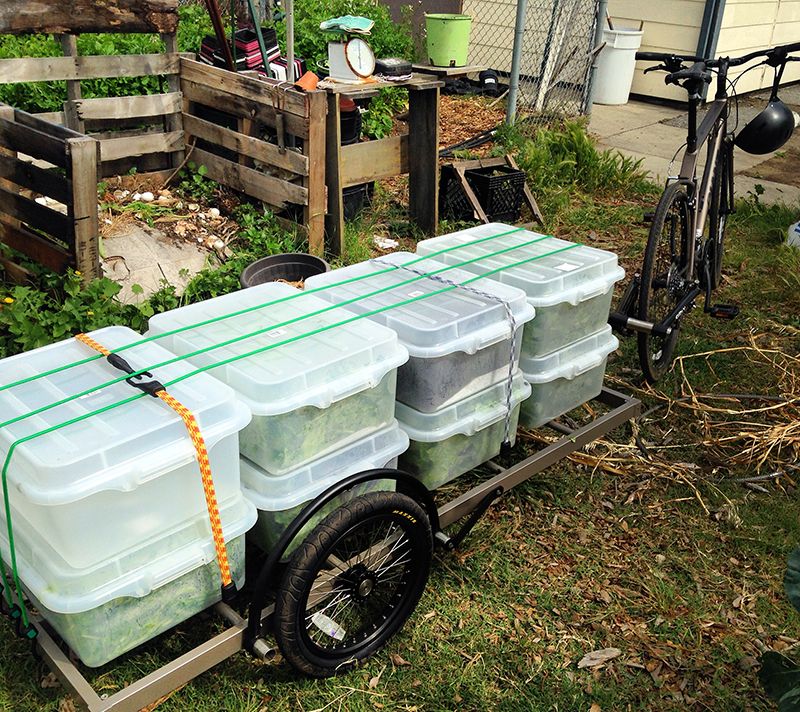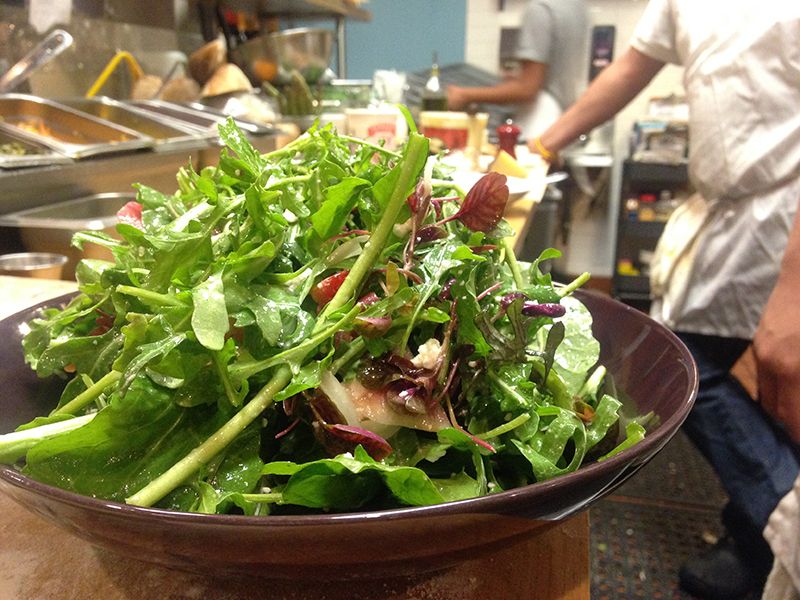A Band of Biking Farmers in Florida Reinvents Sharecropping
Fleet Farming transforms lawns into farms to create a new local food system
/https://tf-cmsv2-smithsonianmag-media.s3.amazonaws.com/filer/b8/ef/b8ef58bf-1afc-46f2-a840-a1e3e26d4c4e/fleet_farming.jpg)
The term sharecropping immediately conjures up vivid and negative images of the South’s post-Civil War confusion, where the popular system of a landowner leasing land to farmers in exchange for part of the crop yield quickly became another way to disenfranchise black Americans. Sharecroppers had to purchase seeds and materials on credit, and due to predatory contracts with landowners, they often ended up owing more than they could pay. When the mechanization of farm work effectively killed sharecropping, no one was too sorry to see it go.
But one Florida nonprofit wants to bring it back in a way that benefits everyone involved. Since 2014, Fleet Farming has been transforming the side, front and back yards of Orlando residents into organic working gardens producing greens, root vegetables and flowers. They currently have 12 “farmlettes” in Orlando, and hope to have 20 by the end of the year. Landowners get 5 to 10 percent of the harvest, and the group sells the remaining produce to local restaurants and farmers markets. This entire farm-to-table cycle takes place within a mere three miles.
Fleet Farming has already successfully expanded to Oakland, California, which has three farmlettes, and Kampala, Uganda, where the team has established 5 farmlettes, and the team hopes to bring the concept to other cities. We talked to Fleet Farming co-founder Chris Castro and Oakland branch coordinator Justin Vandenbroeck about their program, and the challenge of transforming city lawns into thriving gardens.
Swarm rides—bike rides where community volunteers garden the micro farms—are a big part of your program. Why are they important to your mission?
Chris Castro: The swarm bike ride is critical to the success of Fleet Farming. In the swarm rides, people come out and engage with their food systems. We’ve seen a lot of people go back to their houses, build up a raised bed and start farming themselves. One of our missions is to farm farmers. By coming out to these swarm rides, little by little, they’re gaining skills. And at the same time, [we’re] minimizing the emissions that are associated with food production and food systems.
This is a form of sharecropping. How did you decide to go this route when it has such a negative connotation?
CC: We wanted to redefine what sharecropping was. We’re sharing with the homeowner as repayment, and that’s what we’re trying to redefine sharecropping as. It does come with a negative connotation, but most of the feedback we've gotten has [been] ‘That’s pretty unique.’
How do you convert lawns to workable soil?
CC: The prerequisite to participate in Fleet Farming is you haven't sprayed your lawn with any type of chemical within a two-year period. We’ll come in, we solarize, we’ll till, and we’ll bring in about 12 inches of mushroom compost, the growing soil that most of our greens are growing in. Florida's very sandy so we bring in the nutritious soil on top and we build up the bed from that. Most greens have very shallow root systems so they won’t even tap into the sandy soil.
What’s your financial model?
CC: All the revenue that we get from the sales of the product go 100 percent back into Fleet Farming—all of the expenses from irrigation, compost, seeds, we incur. We’ve created two jobs here in Orlando, people paid part-time to come and help maintain these plots throughout the week. After a year and a half, we got to a certain threshold where 10 plots happened to be that amount of supply that we were able to profit from. If you take 20 plots, you profit much more.
Justin Vandenbroeck: This is something that’s hitting the triple bottom line. This is not just environmentally and socially oriented but there’s an economic aspect to it, and opportunities for economic development to help communities. Especially in a community like West Oakland that has a significant unemployment rate, I see this as a critical solution.
What are the challenges?
CC: This is something that Justin and I do outside our 50-hour a week jobs, so finding the time and commitment to build it has been a challenge. Also, not that many people, including myself, have been educated in how to grow food, which is why farming farmers is such a key part of our mission. I’m personally learning how to grow a lot of these varieties from the school of hard knocks. We’re by no means certified farmers. I think that’s something to share with others, that you don’t necessarily have to be a skilled farmer, or somebody who who’s been in the movement for five, 10 or 15 years to start a Fleet Farming branch. If you’re ambitious, and you’re interested in solving problems and building a community within your city, this could be an outlet for you.
JV: The average age of a farmer in America is 58 years old. The biggest challenge for most farmers entering the workforce is access to land. But here in the U.S., we have over 40 million acres of lawn and most of them are connected to municipal water. If you can have land and water, you’ve just knocked out two of the biggest prerequisites to growing food. The opportunity is there.
So what has the response from the community been like?
CC: The response has been overwhelming. About 300 homeowners have signed up and are on our waiting list. People are hungry for ways to get engaged and be a part of the movement, moving our cities toward more livable, walkable, sustainable communities. Often times they just don’t know how. This is a small program that can really have a substantial impact.
JV: People are excited. There’s so much negativity in the news these days. People are desperate for positive news, desperate to see people of all ages, all races and all genders engaging with each other around something so basic and so common that everyone depends on. There’s nothing that brings people to the table like food.
